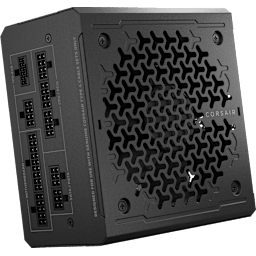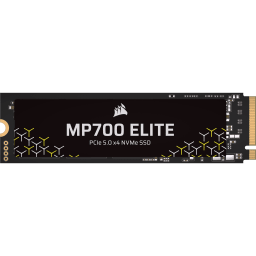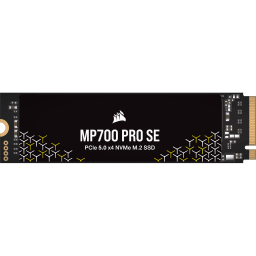BLOG
Does a PCIe 5.0 GPU Work in a PCIe 4.0 Motherboard?
A new GPU season is upon us. This means new graphics cards to lust after, upgrades to plan, and possibly the start of retiring your current system in favor of something new and shiny. With the latest releases from AMD and Nvidia, there are some important decisions to make – potentially more so than usual. Do you simply replace your current graphics card and call it quits, or do you go for a more fundamental upgrade? Decisions, decisions.
The modular nature of PCs means you shouldn’t have to upgrade everything when adding a new component. That said, when the component in question is a graphics card, it makes sense to ensure you're getting the most out of it. They’re not cheap, after all, and if you manage to get your hands on an Nvidia GeForce RTX 5080 or AMD Radeon RX 9070 XT, you’ll want to make sure you’re not bottlenecked elsewhere.

The PCIe 5.0 Question
If you’ve been eyeing a GPU from the Nvidia GeForce RTX 50 Series, you might be wondering whether you need to upgrade to a PCIe 5.0 motherboard, since these new GPUs support the latest version of the standard. The short answer: no, you don’t need to upgrade. PCIe 4.0 offers more than enough bandwidth for modern games. The slightly longer answer: you might still want to upgrade, as the latest platforms come with features that help you get the most from your new graphics card.
It’s worth noting that this applies only to Nvidia’s new RTX 50 Series GPUs. AMD’s Radeon RX 9000 Series, as well as Nvidia’s previous generation, still use PCIe 4.0.

So, what exactly is PCIe, and why should you care? The Peripheral Component Interconnect Express (PCIe) is a high-speed interface that connects devices to your PC, including graphics cards, capture cards, SSDs, and high-end network devices. One slightly odd thing about PCIe is that while it’s a serial bus, it supports multiple lanes operating simultaneously to boost bandwidth. Graphics cards typically use 16 lanes (x16) for maximum performance.
Speaking of bandwidth, each new PCIe generation effectively doubles the bandwidth of the previous one. PCIe 5.0 offers 63GB/s compared to PCIe 4.0’s 32GB/s (when using a full x16 connection). The good news is that the physical connection hasn’t changed between generations, so you can plug a PCIe 5.0 GPU into a PCIe 4.0 motherboard—and vice versa. You could even use a PCIe 5.0 graphics card in a PCIe 3.0 motherboard if you wanted, though at that point, your CPU would likely be a major bottleneck.
Now that we’ve cleared that up, here’s a handy table to whip out at parties and impress your friends with:
| Version | Introduced | Transfer Rate | Throughput | ||||
| x1 | x2 | x4 | x8 | x16 | |||
| PCIe 3.0 | 2010 | 8 GT/s | 0.99 GB/s | 1.97 GB/s | 3.94 GB/s | 7.88 GB/s | 15.76 GB/s |
| PCIe 4.0 | 2017 | 16 GT/s | 1.97 GB/s | 3.94 GB/s | 7.88 GB/s | 15.76 GB/s | 31.51 GB/s |
| PCIe 5.0 | 2019 | 32 GT/s | 3.94 GB/s | 7.88 GB/s | 15.76 GB/s | 31.51 GB/s | 63.02 GB/s |
What Difference Does PCIe 5.0 Make?
With PCIe 5.0 offering double the bandwidth of its predecessor, does that mean double the frame rate? No, not at all. The bandwidth to your graphics card isn’t really a limiting factor in its performance. While there are specific cases where bandwidth matters, gaming isn’t one of them. In testing, dropping from PCIe 5.0 to PCIe 4.0 with Nvidia’s latest graphics cards results in about a 1% performance hit. That alone isn’t a reason to rush out and upgrade to the latest platform.
A much better reason to upgrade is to take advantage of the latest CPUs and platform features. Both AMD and Intel have recently released new processors, with the AMD Ryzen 9 9950X leading in productivity and gaming benchmarks. Intel’s 15th-generation "Arrow Lake" CPUs have been rebranded as the Core Ultra 200 Series, and while they don’t quite match AMD’s offerings in terms of performance, they’re still powerful chips. Both AMD’s and Intel’s latest motherboards support PCIe 5.0.

TL;DR
Here's the TL;DR of all of this to make your life easier:
- You don’t need to upgrade your motherboard or CPU to use a GeForce RTX 50 Series graphics card.
- There’s no meaningful performance difference between PCIe 4.0 and PCIe 5.0 for gaming.
- If your system is old, upgrading is a good idea to access newer features.
- You may need to upgrade your power supply to handle these power-hungry GPUs, but that’s about it.
REGISTRO DE PRODUTOS









